Do you eat a whole foods or traditional diet? Check out this list of suggestions for an Emergency Food Supply on a whole foods diet. There are so many ways to preserve natural, fresh food. Read on for more information!
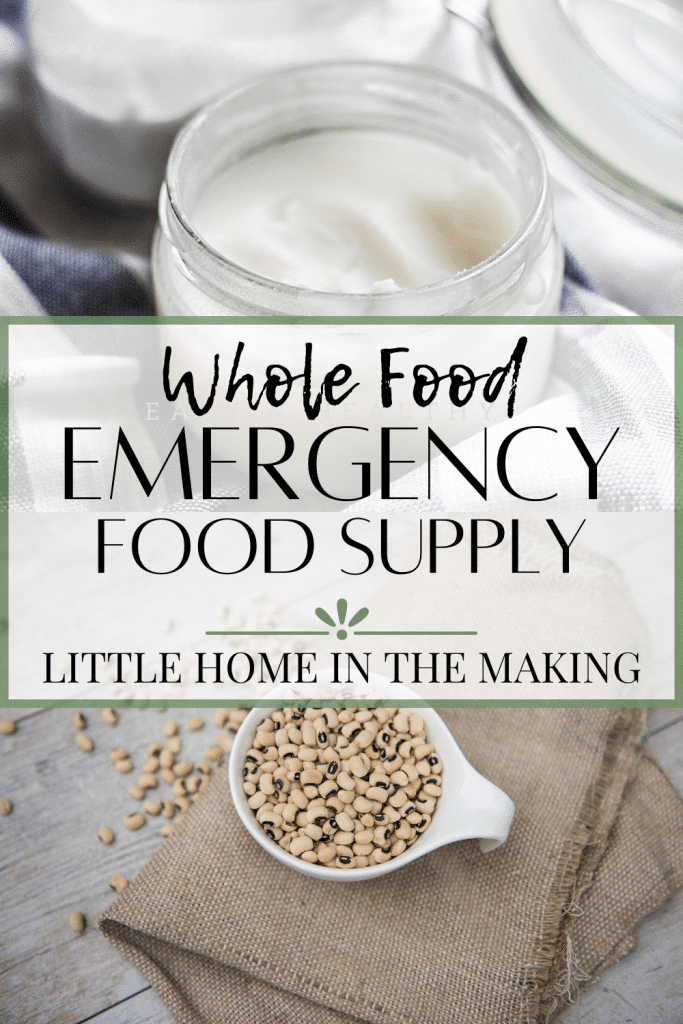
This post contains affiliate links, which means that if you click a link and make a purchase, we receive a commission at no additional cost to you. See our disclaimer for more information.
Don't Act in Fear
I've honestly held off on doing a post of this nature for a number of reasons. I don't believe in being motivated by fear. As a Christian, I believe God is sovereign and everything is for His glory. I can rest in that, and I can have peace that His will be done. Not every one has this view, but even from a secular world view, it's important not to live in fear. What can you accomplish by fear alone? Nothing. The things we fear tend to be those things we can't change.
Instead, we need to be motivated by doing the best we can for our families with the resources we have available to us. Different seasons of life will mean that gets fleshed out differently, but the motivation remains the same. We should be prepared for emergency situations, as we learned earlier this year. We should consider our long term food storage needs, and we should do what we can to ensure our families have what they need. For those of us who try to eat whole foods, we can struggle with bringing foods that we wouldn't normally purchase into our homes. It's important to find ways to stock foods for our emergency food supply without compromising (too much) on our personal food choices. This is particularly important for families with allergies or extreme sensitivities.
I put together this post not to scare anyone or instigate fear, but because I felt like I could offer some help to those who are looking for traditional and whole food options for food storage. Since we live in a rural area, I've spent many years now stocking extra staples to have on hand, and now I feel like I can share some of those tips with you and hope to be of help. This post is a LONG one, but I hope it is a helpful one. I've included a Table of Contents to make navigating the post a little easier.
I also want to say that this post in no way constitutes health advice in any way. It is purely for informational purposes. Ensure you choose the options that work for your family and lifestyle, and leave the rest behind. Take this list as suggestions, rather than a complete how-to guide. All that being said, I hope you find this emergency food supply list to be helpful, and be sure to add any additional suggestions to the comments for other readers to see!

Whole Food Fats for Emergency Food Storage
In an emergency situation, having adequate fats is key to making sure you have enough calories in your diet. Fat has 9 calories per gram, while carbohydrates and proteins only have 4 calories per gram. That means you get more than twice the calories from fats than you do carbs or protein. Many real food fats store exceptionally well, making them a great choice for your emergency food supply.
Coconut Oil: This is a particularly good fat to use in your long term storage plan because it has multiple uses. Not only can you use coconut oil in cooking and baking, but you can also use it for personal care items. I actually use coconut oil as an occasional diaper rash treatment for my son. Virgin coconut oil has a shelf life of many years, making it particularly good for an emergency food supply. If you cook with it often (as I do), store a few large containers. If coconut oil is only something you would use in an emergency, just buy what you're comfortable with and make sure to stock up on other whole food fats on this list.
Ghee: Another fat that has a longer storage time (even at room temperature!) is ghee! Also known as clarified butter, ghee is butter with the milk solids removed. This makes it suitable for some dairy sensitive people, and also gives it a much longer shelf life. Ghee stored at room temperature lasts anywhere from 3 months to a year, and even longer when stored in the fridge. You can even make it yourself at home!
Olive Oil: Extra Virgin Olive Oil is a must in any kitchen, but it would certainly be a welcome comfort during an emergency food shortage. Olive oil is an excellent fat to keep on hand for salad dressings and drizzling on vegetables. It's best consumed raw, and you will get your best storage if you purchase olive oil in dark bottles.
Avocado Oil: Avocado oil is a higher smoke point oil, and high in heart healthy fats. It remains stable for frying, and is somewhat neutral in flavor, making it perfect for homemade mayonnaise and salad dressings.
Lard: "healthy" can be a subjective term, but as far as whole foods go: Lard is one. I'm not talking about the refined block you buy in the baking aisle, but rather rendered fat that comes from pasture raised pigs. Lard has an extremely long shelf life at room temperature, and you can make it yourself with a little bit of effort. If you're just thinking purely about survival food, I would say the blocks from the grocery store shelves would be fine. If you're not feeling the lard, that's fine! Just stock up a little more on some of the other oils on the list.
For the Freezer
Butter: Salted butter lasts quite a while in the fridge, and even longer in the freezer. If you have the space, stock up on butter and store it in the freezer. Even if you have power outages, you could make the butter into ghee to give it an extended shelf life. It's excellent for all manner of baking, and delicious on homemade sourdough bread 😋

Whole Food Sweeteners for Long Term Storage
Honey: This has a basically indefinite storage time, even when opened. As long as you use clean tools to remove the honey, you should have no problem with this long storage food. If your honey happens to crystalize, you can simply warm it and it should become liquid again. You can buy raw honey, or regular honey, depending on your preference. My choice would be to buy regular, since I would be using it in cooking and baking, and would want to be able to get the most for my budget. Honey is also a dual purpose food, since you can use it medicinally. You may want to keep some raw honey on hand for that purpose.
Maple Syrup: Another long storage food and an excellent sweetener. Once opened, you should store your maple syrup in the fridge to prevent mold (believe me, I didn't know this until it happened to me!). For an emergency food storage plan, I would choose to buy multiple containers rather than a large bucket, to ensure I could keep it for as long as possible.
Molasses: This is a by product of making white sugar, and is basically all the "good stuff" from white sugar. It's very good for baking, and many older people in my area use it on their pancakes. During the depression, it was much cheaper than sugar and used for many sweetening purposes. You can buy it in 5 gallon buckets if you're looking to stock up.
Dates: Both whole dates and date sugar can be used to add sweetness to baked goods. Since dates are dried, they have an excellent storage life when kept in a sealed container. They can be minced or pulsed and used in things like energy bites, or to make deserts.
Coconut Sugar: This can be purchased in bulk, and is lower on the glycemic index than many other sweetening options. It also happens to taste pretty good in coffee, and has a brown sugar-like flavor.
Unrefined Cane Sugar: This is great for canning, preserving, and baking. Yes, it's still basically white sugar, but it is a good compromise if you often choose to forgo refined white sugar. For a long storage food, I could see this being a great choice. You could also opt for white cane sugar if your primary concern is security and being prepared, rather than having perfectly "natural" foods. Regular sugar is also great for feeding ferments like ginger bugs, kombucha, and water kefir.

Healthy Proteins for Food Storage
Farm Fresh Eggs: Unwashed, farm fresh eggs can store for months and months...and that's a room temperature! When a chicken lays an egg, they leave a protective coating on the egg. When we wash farm fresh eggs, or buy them from the grocery store, that coating is removed. Because of this, we need to keep those eggs refrigerated. That's not true for unwashed eggs, which can be kept in the pantry. If you have access to unwashed, farm fresh eggs, you can stock up for your emergency food supply. If you only have access to store bought, they will still keep for a good amount of time in the fridge. Just be mindful of the space you have available, and if your family will eat them before they go bad.
Nut Butters: Peanut, almond, and cashew butter are all excellent sources of protein and fats. On top of that, they have a fairly long shelf life and can be used in baked goods. I love stirring a few tablespoons into cooked oatmeal to add some extra protein and delicious flavor.
Beef Jerky: If you have a dehydrator, you can make some of this yourself. I like to keep my homemade beef jerky in the freezer because I'm extra paranoid, but plenty of people keep it sealed in the pantry or fridge. Do your research and decide on what you're most comfortable with if you go that route. If you buy commercially available beef jerky (this stuff is grass fed), you are certainly able to keep that at room temperature for an extended amount of time.
Pemmican: This is a "survival food" if I ever saw it. I've never actually made pemmican, but I've heard plenty about it. I know it is really common for people in the prepper community to make it, and it is made with whole food ingredients. It lasts for decades, making it a perfect food to stock for an emergency situation. To be honest though, it doesn't sound too tasty 😂. This post from Primal Survivor shows you how to make pemmican, and several flavor options as well.
For the Freezer:
As for the freezer, how much you stock and what particular meats you stock is totally dependent on your family. If you can, opt to vacuum seal your meat so it lasts longer. If you're worried about extended power outages, opt for stocking lower quantities that could be preserved or cooked (like lean beef cuts for jerky). You could also opt for a generator to power your freezer. This is something we plan on doing in our home eventually, since we have had power outages for more than 3 days.
Beef: Stock your freezer with any beef cuts you enjoy. Roasts are a great option for feeding larger families, and to help stretch your meat. You can use leftovers to make pot pies or soups. Lean cuts are great for making jerky, but if you can locate beef fat, that's a great option too! Beef fat can be rendered into tallow, which is basically shelf-stable and can be used as a cooking oil, or in pastries and breads should you need it. Tallow can also be used in making personal care items, giving it double duty should you need it. Check out this post from Bumblebee Apothecary to learn how to render tallow in a crock pot.
Chicken: Whole chicken will give you the best bang for your buck, especially since you can use the remaining bones for making bone broth, which then can be made into soup. Whole chicken is cheaper than buying the individual parts, and in my opinion, more satisfying. Certainly, there is a place for boneless skinless chicken breasts (hello Skillet Chicken Fajitas!), whole chicken has a mix of fats and proteins, which makes it generally more filling. If your family doesn't like whole chicken, it may be a total waste for you to stock them. Only stock what your family will reasonably eat!
Pork: We actually don't eat a lot of pork in my family, so I won't be stocking my freezer with a whole lot of it. Bacon is a favorite for sure, and I love making Homemade Breakfast Sausage Patties with ground pork, but I won't be buying too many of your standard cuts of pork. If your family happens to love pork, stock up. Pork is one of the cheaper protein options, so if it's something your family likes, you could probably get quite a bit of meat for not a lot of money. I will be stocking up on pork fat to render into lard for cooking and personal care items.
Wild Game: If you have a hunter in your home (or are one yourself), chances are you have lots of wild game available. Make sure it is packed properly to ensure that it doesn't go to waste. Where I live there are strict bag limits, but I've heard of some hunters giving away excess meats for free to families who need it. You may want to check out your local facebook groups or craigslist ads to see if that's something that is available in your area.
Other: Any other cuts of meat or proteins that you enjoy can be stocked up on. Just ensure you only stock what you eat, and eat what you stock. Vacuum sealing will give you the longest freezer life, and keeping it all in a deep freezer that is closed most of the time will keep it frost free for longer.
Canned Options:
Canned Salmon: This is one of my favorite things to keep in the pantry at ALL times. I love making salmon patties with sourdough breadcrumbs and frying them in a little coconut oil. This brand is BPA-free, wild caught, and available on Amazon. Definitely an excellent source of protein, as well as healthy fats.
Canned Tuna: Another great canned option, this one is BPA-free and tested for mercury levels. Tuna Melts are a favorite here in my home, but you can make tuna patties and tuna sandwiches very easily as well.
Clams: I don't know if it's because I'm from the North East, but clam chowder is a delicious way to get lots of iron, iodine, and protein. You can find canned clams easily, and they make a delicious and nutritious meal without a lot of additional ingredients.
Sardines: These are well know long storage food, and very healthy for you as well! A meal of sardines, cheese, and bread is a fine one at the best of times! A great source of vitamin D as well. (These ones are wild caught and BPA free).

Nourishing Fruits and Vegetables for Long Term Storage
Potatoes: These are the workhorse of the root cellar. Potatoes, when stored in a cool, dry place can last for months and months and months. The best part? Once they start sprouting in the spring, you can pop them in the ground to grow more. Of course, that isn't an ideal form of seed potato, but it certainly can work. A local farm close to me sells 50lb bags for $20, making them a great purchase for our family. I find russet potatoes have the longest storage time since they are generally quite dry. Potatoes are a filling food, and a great source of potassium. Sweet potatoes also store quite well.
Onions: Keep these in a cool, dry place and they will last for a very long time. Onions add flavor and bulk to your meals, and are a key ingredient in making bone broth, roasting chicken, and most soups and stews. In the fall, you can find all kinds of excellent prices on onions. Yellow cooking onions last the longest and are the most versatile, so they are a sure win for your emergency food storage plan.
Carrots: These like it cold and moist, so the fridge is the easiest place to store carrots. You can also store them in a cool basement. Since we have high humidity where I'm at, little needs to be done in that department. I have seen others store their carrots in slightly dampened sand. Carrots are a great option because they store for a very long time, and are inexpensive year round.
Beets: Another vegetable that likes a moist, cool environment. If you have space in your fridge, opt for that. Beets will last a long time, even if they look a little gnarly on the outside. I'm in the process of fermenting some beets so we have a delicious fermented vegetable option through the winter. Beets are also great when tossed with olive oil and salt, and roasted in the oven with other root vegetables such as squash and carrots.
Squash: Speaking of squash, another long storage food is all manner of squash (except zucchini). Spaghetti squash is particularly long storing, but butternut, acorn, and pumpkins all store very well. As long as they were properly cured, squash can be stored in a cool, dry place for months.
Parsnips: These are certainly not my favorite, but they tend to be a little more delicious when roasted alongside other root vegetables. They are long storing, and can even be left in the ground if you grow them yourself.
Turnip and Rutabaga: Again, not an absolute favorite for my family, but we don't hate it either. There is a chicken stew with dumplings that is traditional in my region, and it calls for the use of a turnip. Honestly, it just isn't the same without it. Mashed turnip with some butter isn't too terrible either, so I will be stocking up. Take your families likes and dislikes into account when making the decision to buy or not buy anything on this list.

Fruits for an Emergency Food Supply:
Apples: There are certain varieties of apples that store longer than others. Check out your area and ask around to see what cultivars last the longest. Here's a list from Practical Self Reliance that may help you get started. Apples are a great storage fruit because you can quickly use them up in making applesauce, or apple scrap vinegar if you notice they are starting to turn.
Pears: These are another excellent storage fruit. Check out this post from Common Sense Home for tips on how to store your pears for the longest period possible. Like apples, these can often be bought in bulk from a local orchard. They can also be turned into pear sauce if they start to go bad, which is made very much in the same way applesauce is.
Dehydrated Fruit: You can purchase all kinds of dehydrated fruits and vegetables, or you can make your own if you have a dehydrator. They have a long shelf life, and dried fruit is easily softened when stirred into boiling water, and then combined with oats for a yummy breakfast option. They are also good for just general snacking.
Take Advantage of Frozen and Canned Fruits and Vegetables
There are so many options for frozen and canned fruits and veggies. Buy whatever your family likes and will reasonably eat up. Canned foods last the longest, so they are good to have on hand for a long term food storage option. Frozen is great for using up first in an emergency situation. We love frozen berries, green beans, and broccoli most of all. There is also an excellent mixed vegetable blend that we buy from Costco that is organic and a great price. Costco is a great place to pick up bulk fruits and vegetables, but you'll definitely want to shop around for the best price in your area.
Canned Tomatoes: These can be a building block of so many meals. Soups, chili, casseroles, curries, and Bolognese sauce all start off with delicious tomatoes. You can purchase jars or BPA-free cans if you desire, but make sure you get a variety of types for different purposes. Diced tomatoes, tomato sauce, and tomato paste are all on my list. Rotel is another one I like to keep on hand for a spicy kick.

Filling Carbohydrates for an Emergency Food Supply
Grains, beans, and lentils all provide an excellent source of carbohydrates (aka energy). Most of these items can be stored long term at room temperature, making them ideal for your emergency food supply.
Beans: Navy, pinto, kidney, great northern, and black beans are all some of my favorites but I keep pretty much every type of bean on hand. Don't forget to stock up on dried peas as well, as they make an excellent soup when simmered with a leftover ham bone. We buy the dried beans so they store long, and because they are less expensive. If you are worried about an ample water supply, canned beans may be a better option for you since you will need water to cook them.
Lentils: I love using lentils in my cooking, since they are lower in phytic acid and don't require as much cooking. Lentil soup is frugal and filling, and my Curry and Masala Lentils are a family favorite. Another item we buy dried, and I would suggest the same unless you have concerns about water.
Barley: This is a grain that is not often thought about, but it makes a lovely addition to soups and stews. Adding just a cup full to a large pot of soup will help make the meal more satisfying and add some delicious fiber to keep your family full.
Wheat Berries (and grain mill): All purpose flour has a long storage time, but if you like to use whole grains, you know how short of a shelf life whole grain flours have. Opt for buying your wheat berries in bulk, and using a grain mill to grind your own flour. It sounds a lot harder than it is! I have this crank-style model, making it perfect if I need to use it without electricity. You can also purchase a motor for it, which I think I will be doing soon. Grinding flour sure is a workout without a motor! The Wonder Mill is a highly rated large electric grain mill, so if you have a lot of grain to grind, this may be a good option for your family.
Rice: We have purchased our regular brown rice, but also a large amount of white rice. White rice keeps much longer, and so it is worth it for us to have that on hand just in case we need to use our emergency food supply. We are still keeping our brown rice on hand, but only in quantities large enough that we can go through them without wasting anything.
Quinoa: Long storing, and a complete protein! Quinoa is the perfect carbohydrate to keep on hand for your emergency food supply. Since it is high in protein, you can base an entire meal around it. This will help you stretch and ration your meat products if needed.
Oats: We purchase both rolled oats and steel cut oats. Both have a long shelf life (steel cut is longer), but different cook times. I like using rolled oats for when I want to prepare a quick breakfast, since it only takes about 5 minutes to cook. Steel cut oats need to simmer for much longer, so I save those for when I have a bit of time or when I want to use my Instant Pot to prepare breakfast. Rolled oats are also used in baking, where steel cut oats are not.
Flour: Of course, flour! You can make bread, tortillas, and more from wonderful flour. All purpose lasts the longest, but if you like to use whole grain you'll have to get creative. Store your extra flour in freezer bags inside your deep freezer. This will keep it fresh for much longer. If you have little freezer room, or a longer shelf life in mind (think: decades) you would want to invest in purchasing some wheat berries and a grain mill like I mention above.
Bread: Sandwich bread, tortillas, english muffins, and more. These are all good options for keeping ample storage of in your freezer if that is part of your emergency food plan. You can also make them yourself if you have a good storage of flour and/or grain, but having ready made is nice if possible. If you're storing whole grain and sprouted grain breads, it is essential to leave them in the freezer since they spoil much more quickly that white breads.
Pasta: Many folks on a whole food based way of eating avoid pasta, but it can be a great choice for an emergency food supply. Pasta has a long storage time, can be prepared quickly, and is an ample source of carbohydrates. Even whole grain and sprouted options have a decently long storage time, so they make an excellent option.
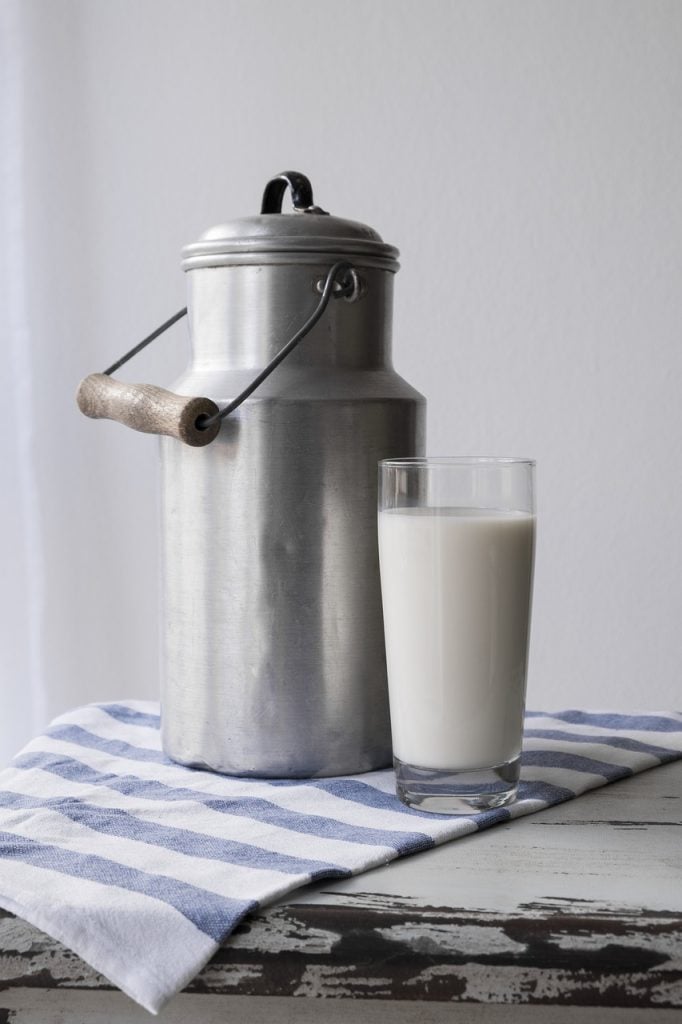
Long Storage Dairy Options
Kefir: A great way to add extra storage life to the milk you have is by fermenting it into kefir. Kefir lasts for at least a month in the fridge, and to be honest, I've drank it after several months and I'm still here 😓😂. That's not to say you should do the same (check into the safety of fermented dairy and use your best judgement). With just 24 hours and a few tablespoons of kefir grains, you can have a fermented milk product that makes excellent smoothies, and overnight oats too! You can purchase kefir grains from Cultures for Health (get my 20% off code here) or on Amazon. Here's a great video that explains the kefir-making process.
Milk: If you have access to a deep freezer, and a good amount of space, you may be in luck! The one caveat depends on what your goals are with your emergency food supply. If you're uncomfortable with large amounts of food in your freezer because you're preparing for power outages, this may not be the option for you. If you're worried about shorter term food shortages, or preparing for a particular event or season, freezing milk may be a great option for you. If you purchase your milk in jugs, you can pour out about a cup of milk (and drink it of course), add the cap back to your milk, and freeze it in the bottom of a deep freeze. If you opt for fresh milk from a farm, you probably want to transfer the milk to plastic containers, leaving enough headspace for expansion during the freezing process. Here's a post from MOMables with more detailed information about freezing milk.

Necessities For Your Emergency Food Supply
Salt: This is something you don't often think about, because it most often seems like we're trying to avoid extra salt. Cooking from scratch with whole foods, generally means you need to add salt, rather than avoid it. As far as an emergency food supply goes, you won't get very far without salt. We need salt to survive, and it was a prized commodity in years past. With the inclusion of processed and packaged food in our diets, we don't often worry about salt in the way generations of the past did. It's important to include a good quantity in your food storage plan, leaving plenty for preserving and canning if need be. Pick up whatever type of salt your family uses. We like Real Salt, but I stock kosher and table salt too.
Vinegar: I recommend stocking up on both white vinegar and apple cider vinegar. If you can get a raw apple cider vinegar with the mother (like Braggs), you will be able to use some of that as a starter for apple scrap vinegar so you have a continued source of vinegar. Vinegar is important because the high acidity makes it perfect for preserving food (think pickles). It's also valuable as a cleaning product. Ample quantities of vinegar is a great addition to your emergency food supply.
Yeast: If you like to bake breads, you'll need some yeast. I buy large packages of yeast and keep it in my fridge to help it have a long storage life. Thankfully, during the last food shortage I still had my bulk package in addition to an established sourdough starter. If you need yeast on a regular basis, I highly recommend buying it in bulk so you have ample quantities at all times.
Sourdough Starter: Remember the sourdough craze of early 2020? Yup. That's because the stores were out of yeast and bread. If you ever encounter a situation like that again, it sure would be nice if you had an active sourdough starter to help you make delicious bread. I was so very thankful for my mature starter and relative experience in the realm of sourdough, since I didn't have to worry about how I was going to find bread for my family. I highly recommend this method for getting a starter going, and this recipe for a beginner bread recipe. It requires no kneading and is super simple.
Filtered Water: Having a clean source of water is so important! We are on a well with a filter, but I still purchase some water for power outages or if our filter stops working. Make sure to get spring water (rather than distilled), so that you can use it for fermenting if needed. You'll need a ½ gallon of water per person per day simply for drinking purposes. If you have lots of dried beans and grains in your emergency food storage, you'll need to account for that in your water supply as well.

Little Luxuries for Your Emergency Food Supply Plan
Whole Coffee Beans: Whole coffee beans have a much longer shelf life than ground coffee, and a delicious brew could be just the pick-me-up you need during difficult times. Make sure you stock a coffee grinder, as well as a French press to ensure you can get your coffee on. I love French press coffee for the taste alone, but it's also great because it can be prepared without electricity. All you need is boiling water and coffee.
Tea: If you're not a coffee drinker, perhaps you like tea! Or maybe you even like both. It's nice to have a warm drink, so stock your favorite teas. Tea has a long storage life, especially if you purchase whole leaf tea.
Items You Wouldn't Normally Buy
We all have health goals and things we may try to avoid or include in our diets, for whatever reason. When it comes to your emergency food supply, you may consider stocking up on items you wouldn't normally purchase on a day to day basis. We wouldn't normally eat ramen noodles or boxed macaroni and cheese, but I have bought these items for my emergency food supply. They don't make up the majority of my supply, but they are there as a "just in case" food, and also as an easy way to prepare a meal if I'm not feeling well: survival situation or not.
So I encourage you to think about the foods you may not include in your weekly grocery shopping list, but that have a long storage life or are calorie dense (like potatoes and pasta). Consider if those items might be worth adding to your emergency food supply. Of course, if you have allergies in your family or dietary restrictions for very serious reasons, your situation is much different. Use your common sense and try to find a balance when establishing your food storage plan.
In Conclusion
This list is by no means exhaustive, so ensure that you take inventory of the items you regularly use that are unique to your family situation. These are merely suggestions that may or may not work for your way of eating, or for your emergency food storage plan. I hope this list of ideas was helpful for you in planning out your long term storage options, and be sure to drop any suggestions you have in the comments below!





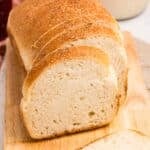




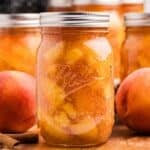



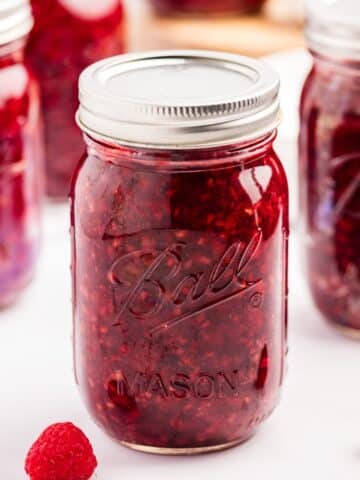

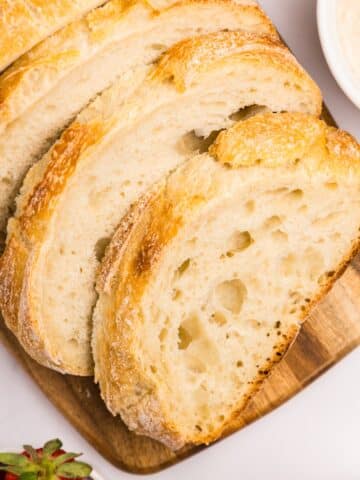

Leave a Reply